Application electric current of high-frequency in physiotherapy. Methods




















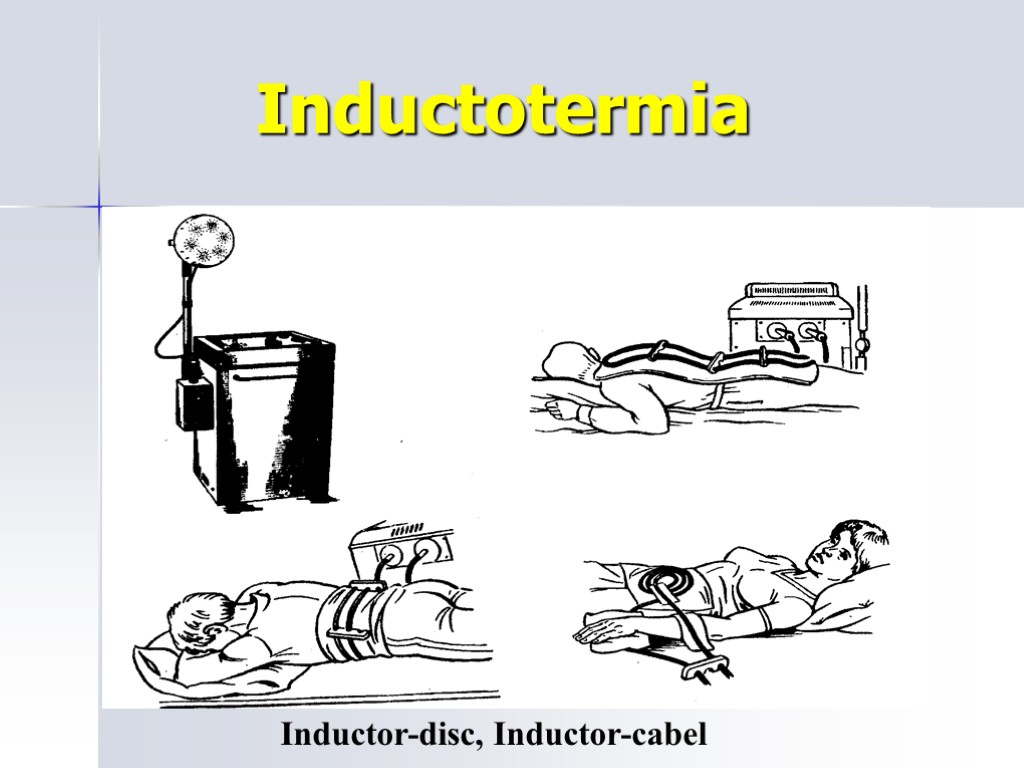



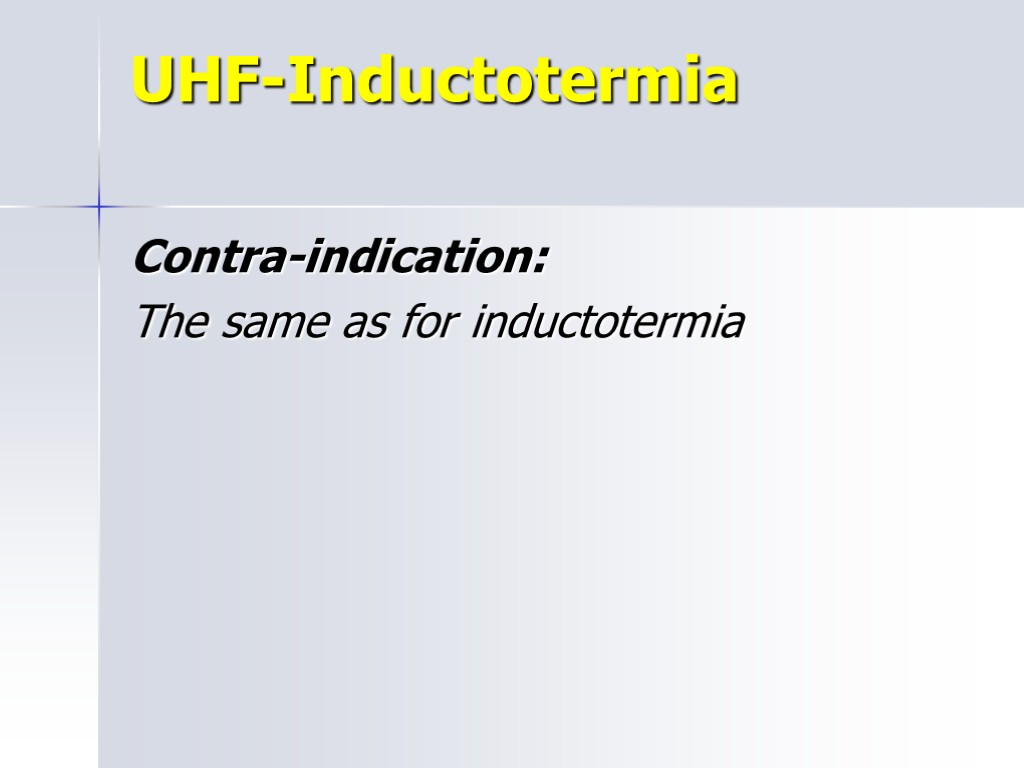

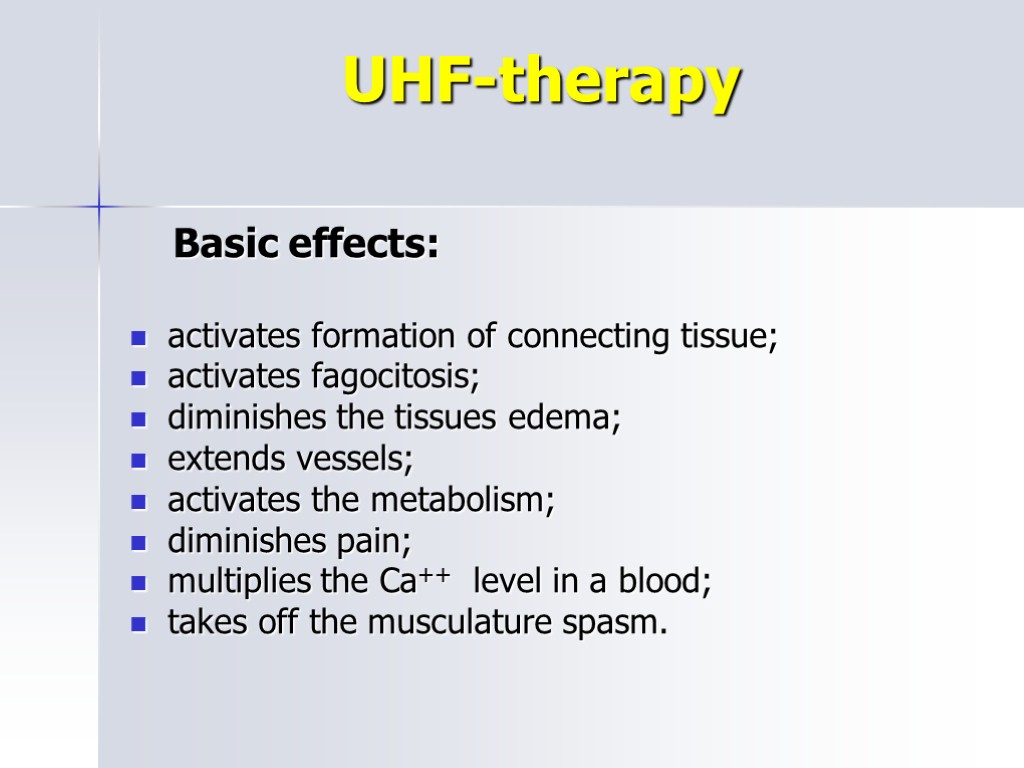
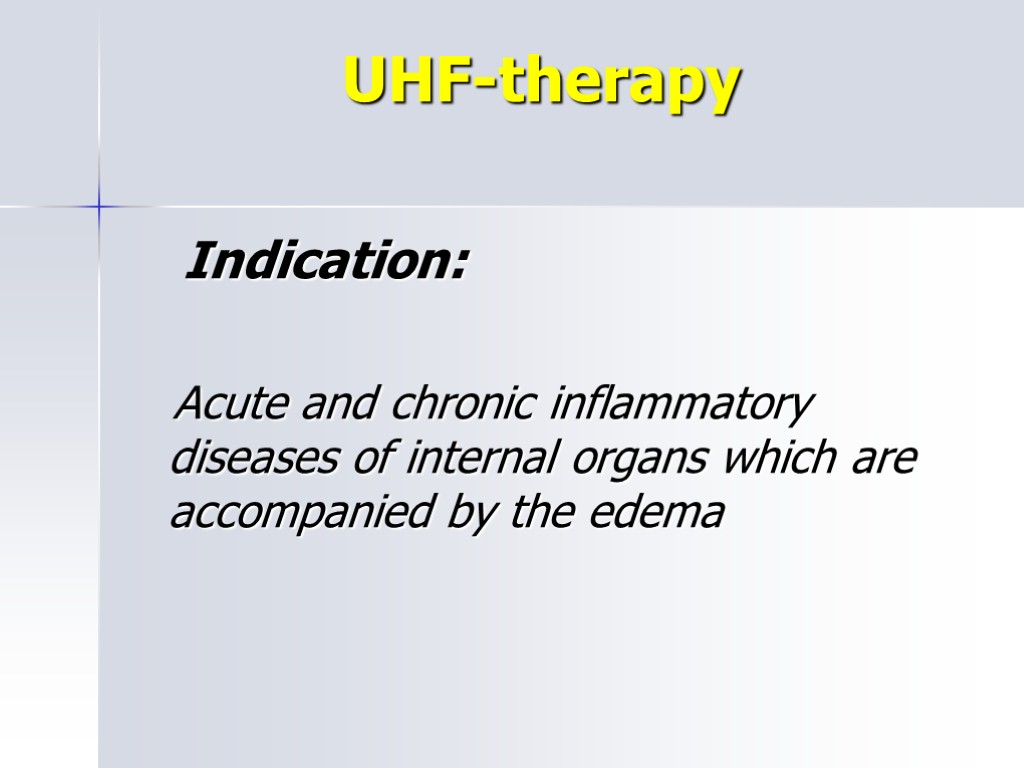
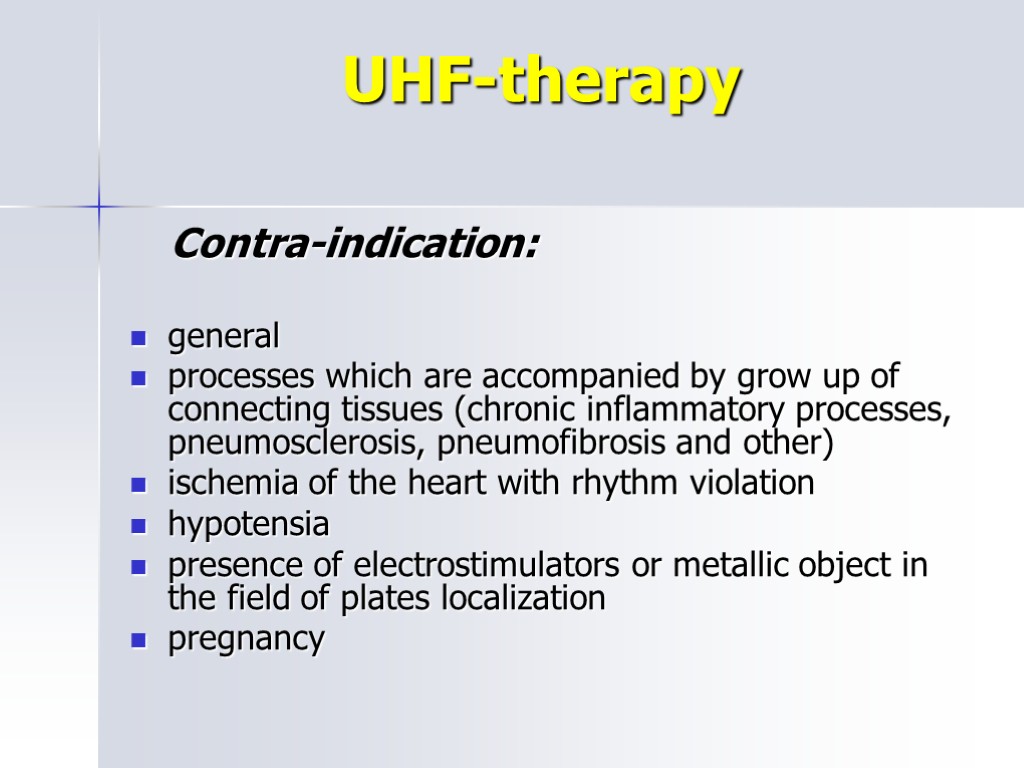
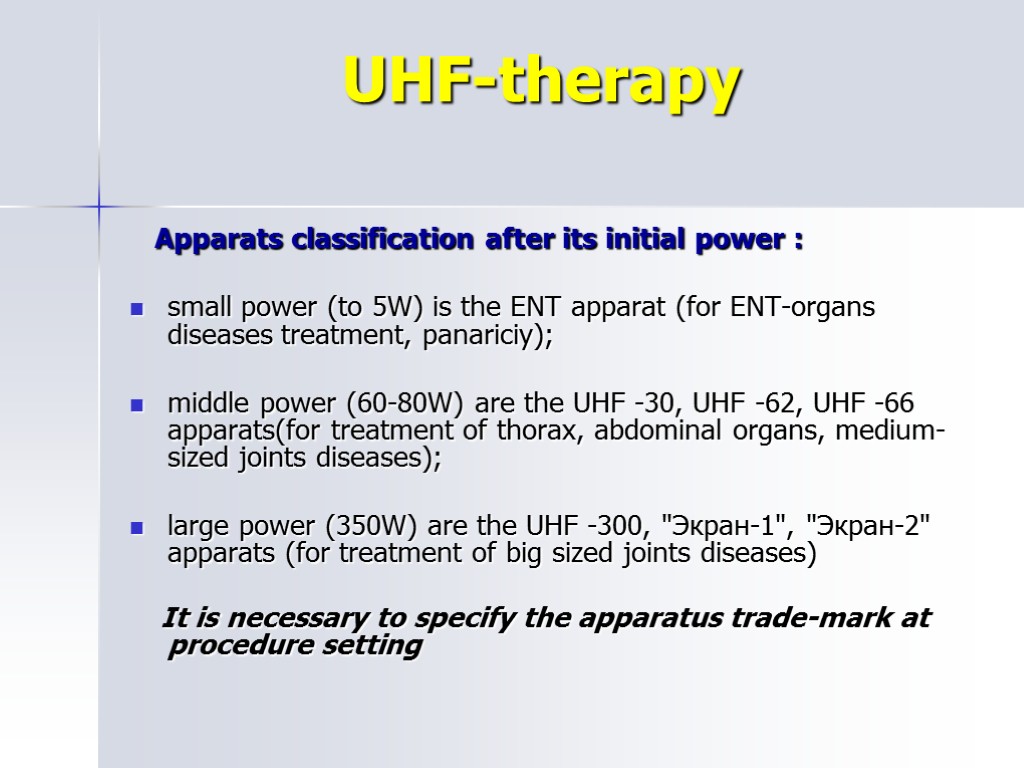
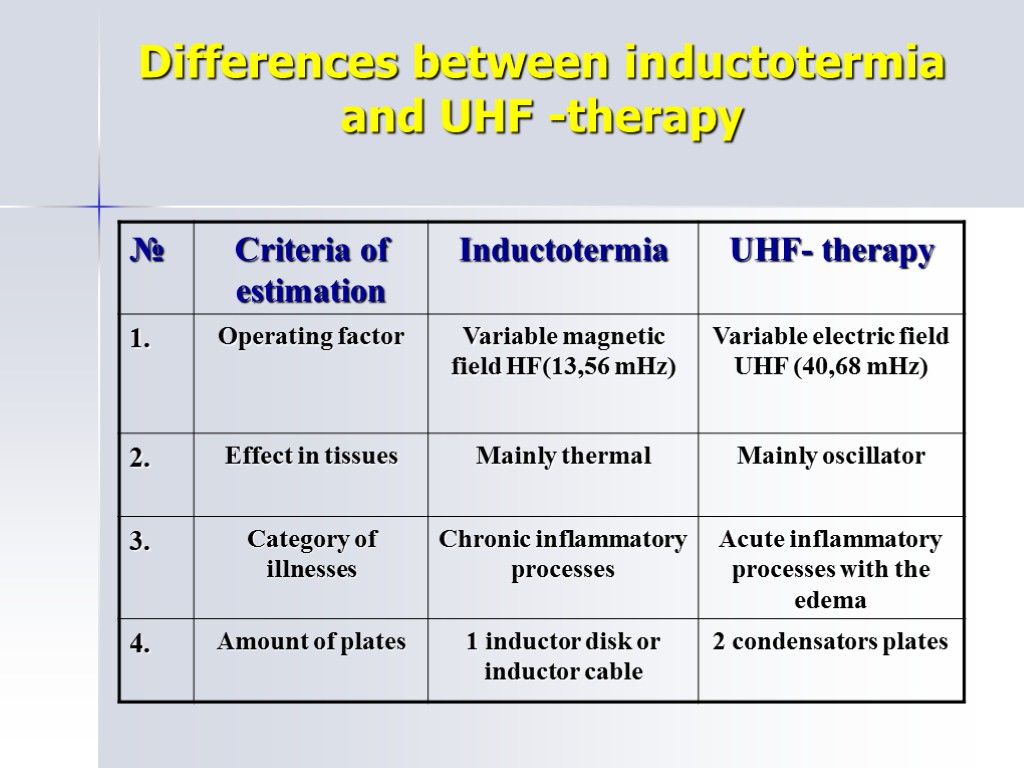
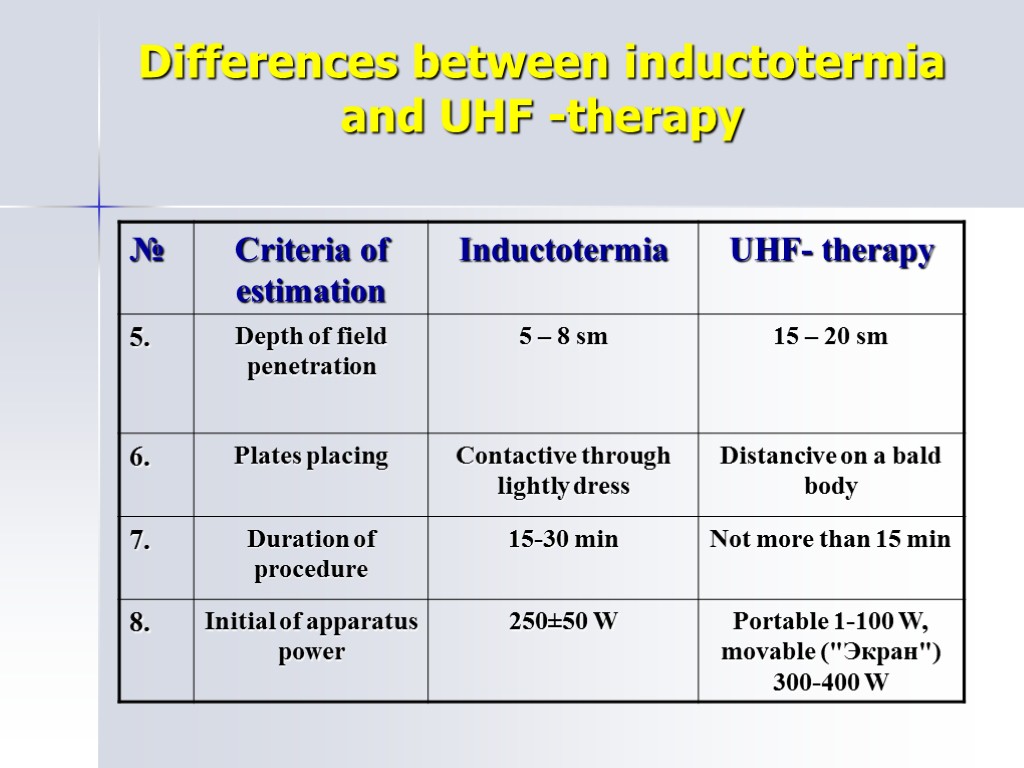
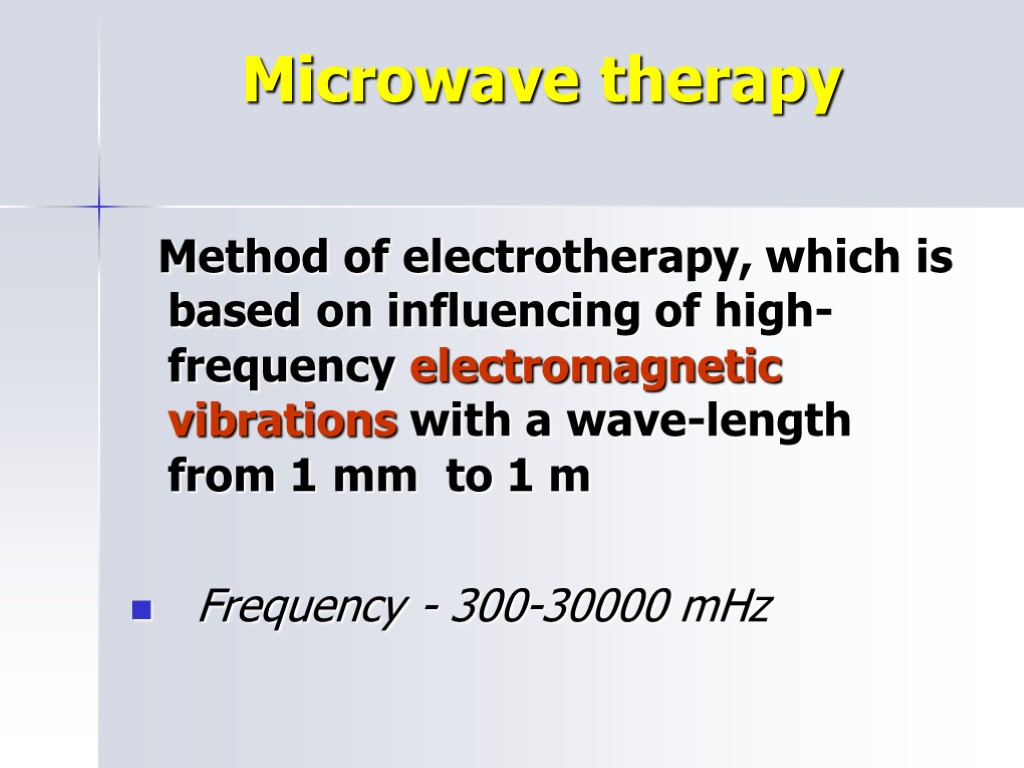
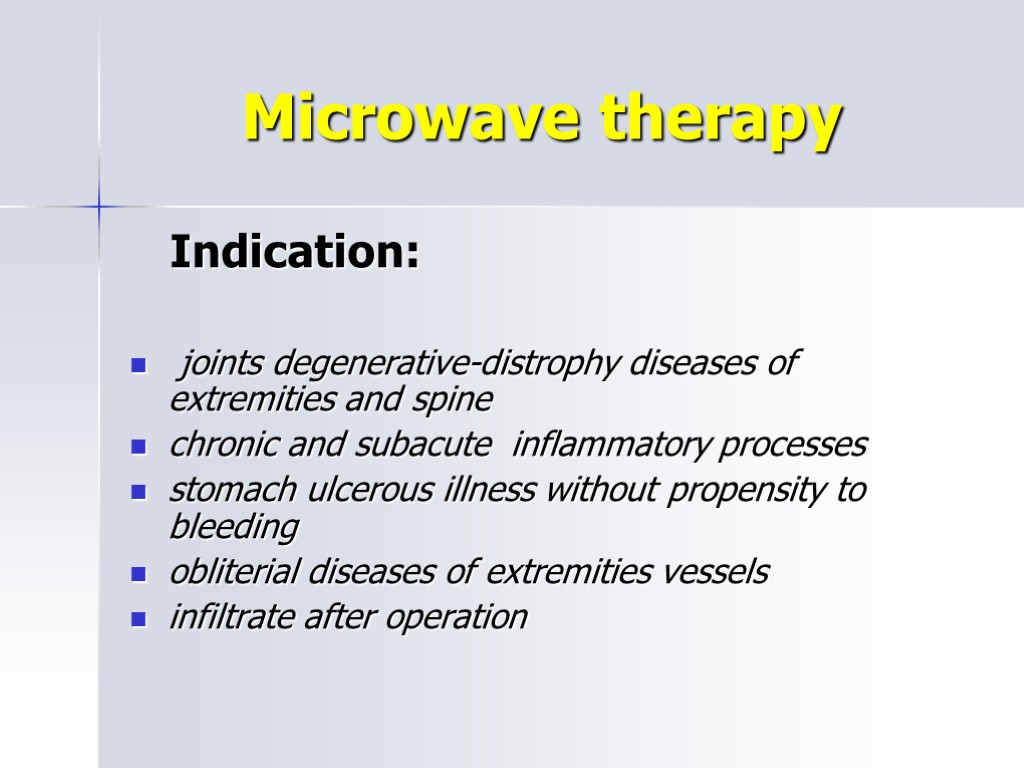
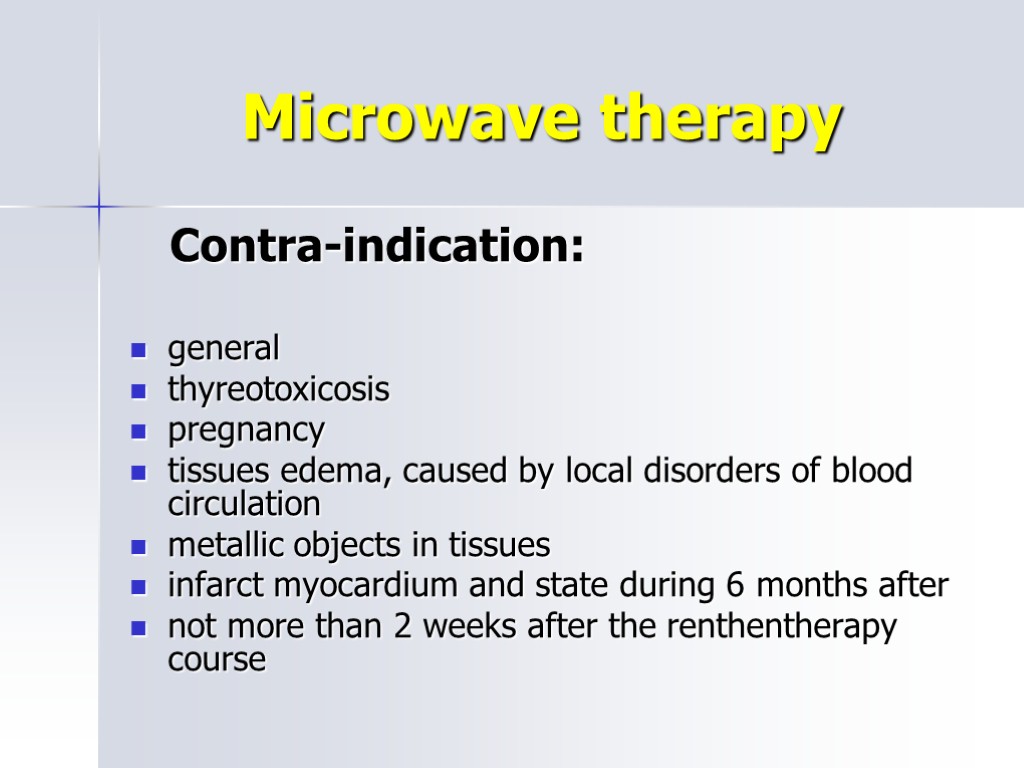
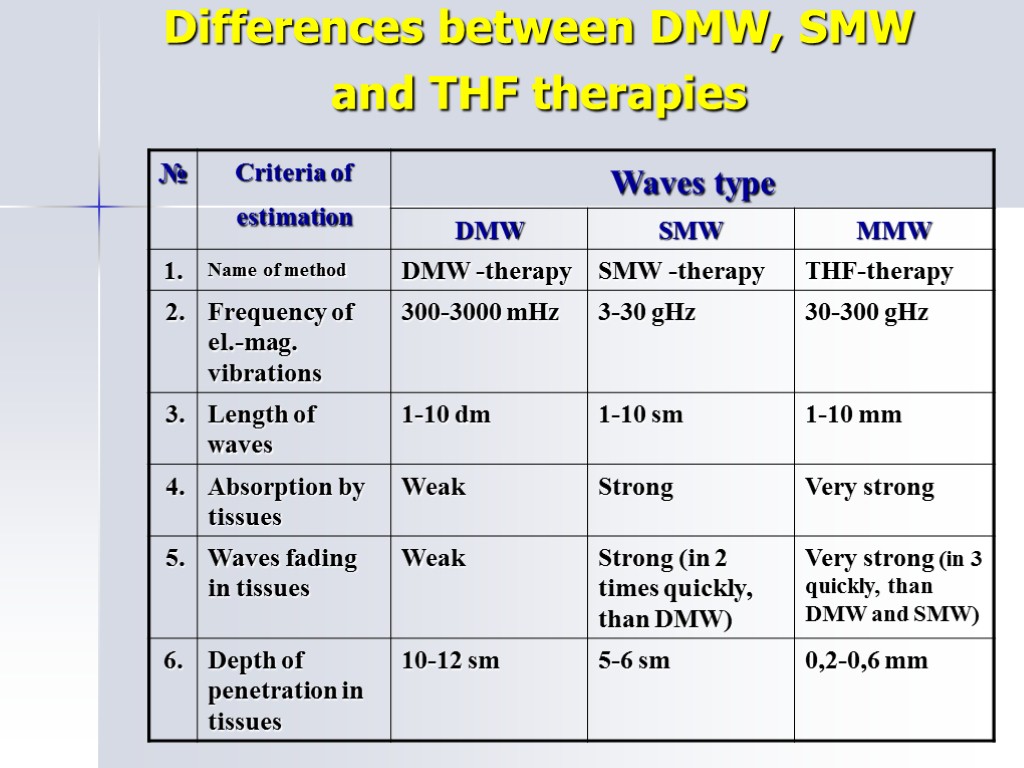
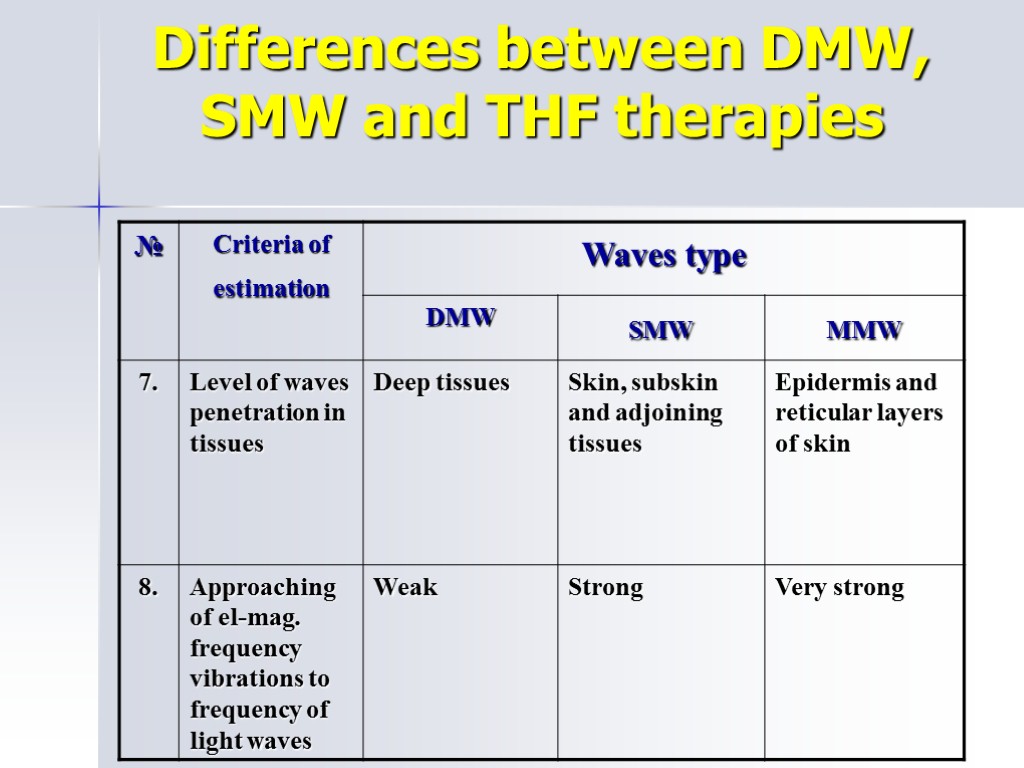
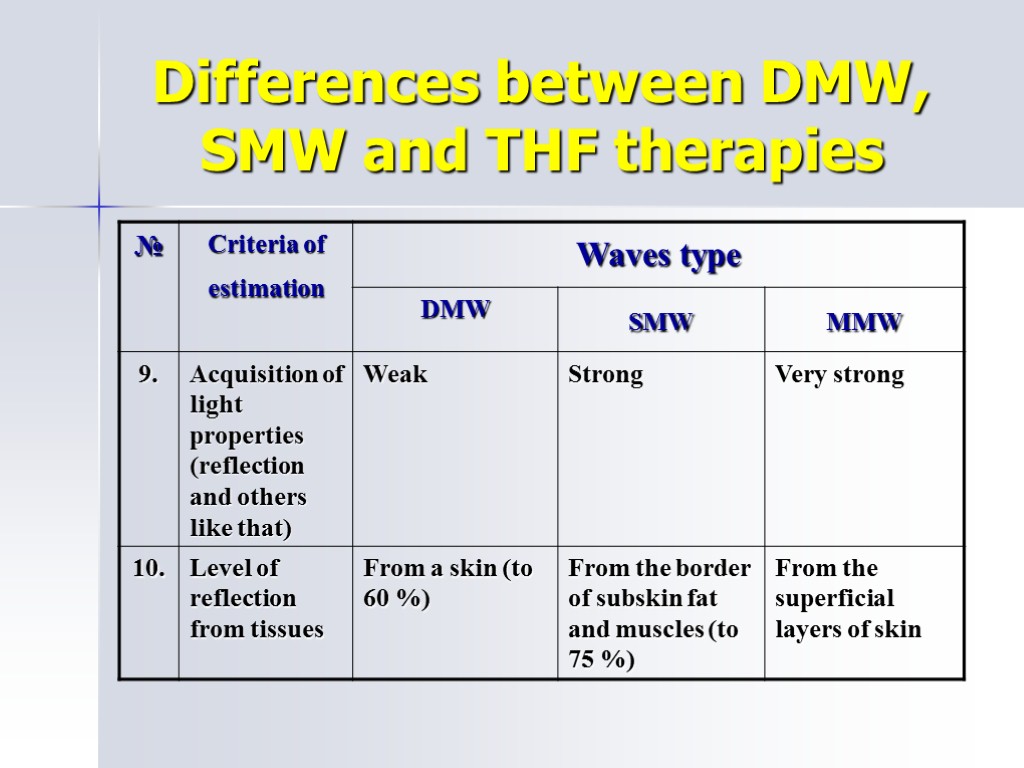
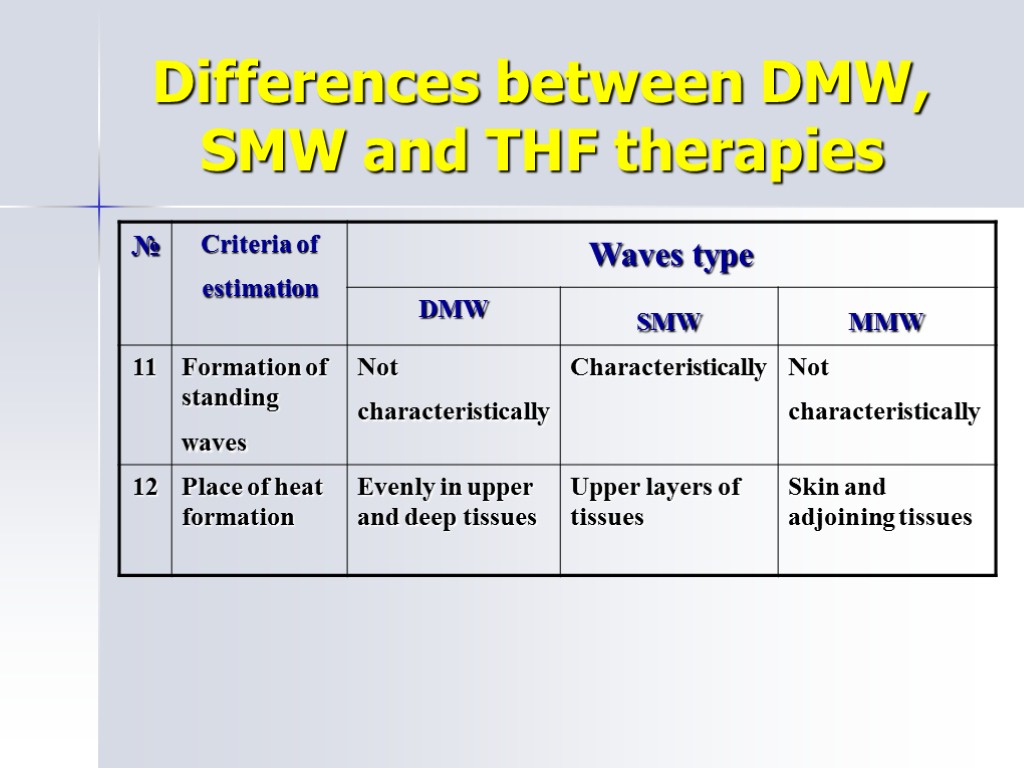
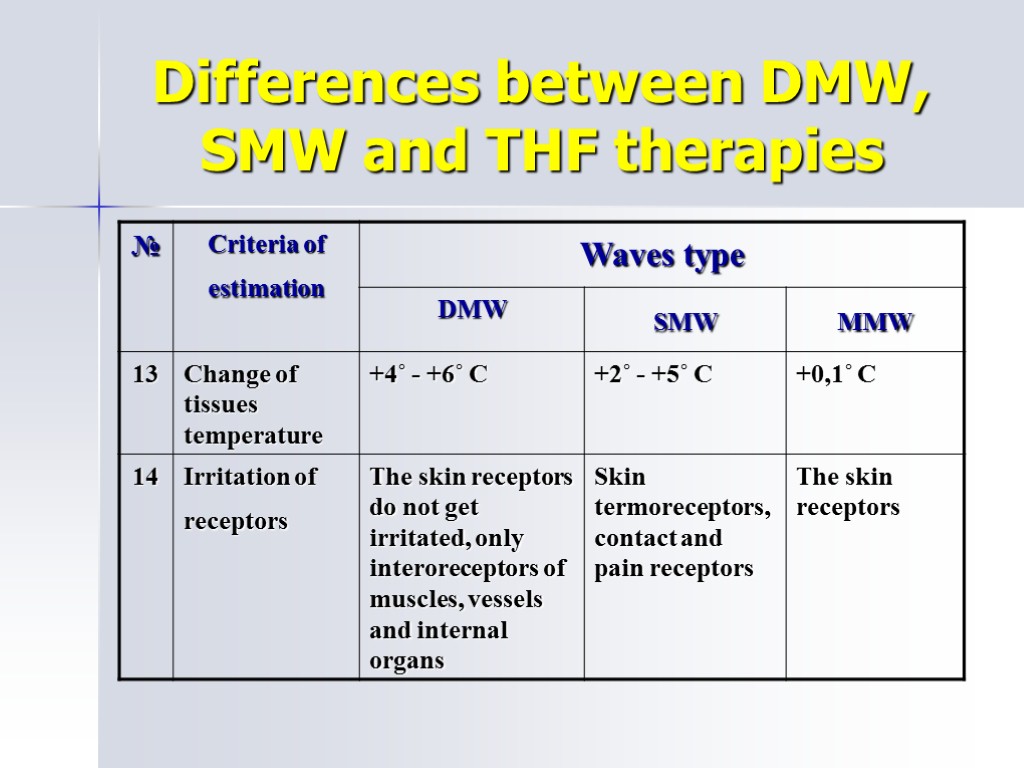
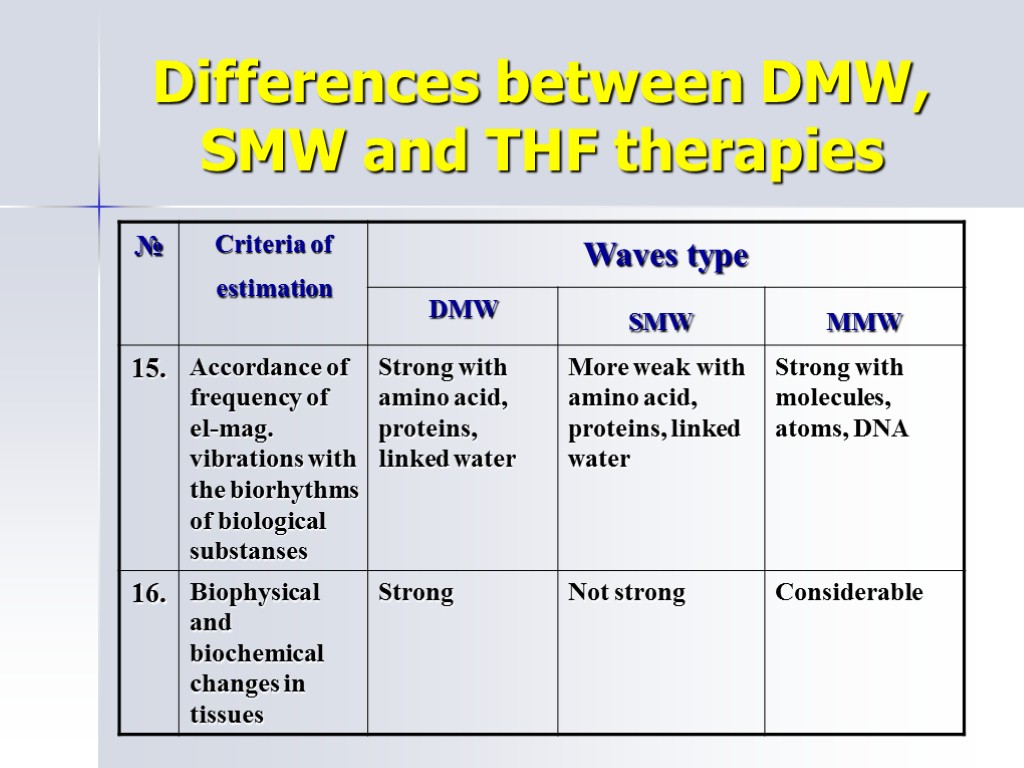
high_frequency_current-1_-1012.ppt
- Количество слайдов: 40
 Application electric current of high-frequency in physiotherapy
Application electric current of high-frequency in physiotherapy
 Methods of physiotherapy in which a high-frequency current is used
Methods of physiotherapy in which a high-frequency current is used
 Darsonvalization Method of electrotherapy, which is based on application of alternating current of high-frequency, high tension and small strength of current Frequency - 160-400 kHz Tension - 10-100 kW Strength of current - 10-15 mA
Darsonvalization Method of electrotherapy, which is based on application of alternating current of high-frequency, high tension and small strength of current Frequency - 160-400 kHz Tension - 10-100 kW Strength of current - 10-15 mA
 Darsonvalization Operating factors: quiet electric digit (discharge) sparking electric digit A leading effect is an oscillator
Darsonvalization Operating factors: quiet electric digit (discharge) sparking electric digit A leading effect is an oscillator
 Darsonvalization Therapeutic effects: vessels tone is normalized vein stagnation diminishes tissues trofic gets better bactericidal and bacteriostatical actions increases anaesthetic effects is activated
Darsonvalization Therapeutic effects: vessels tone is normalized vein stagnation diminishes tissues trofic gets better bactericidal and bacteriostatical actions increases anaesthetic effects is activated
 Darsonvalization Indications: skins trofic violation, hairs fall; parodontosis, gingivitis, glosalgia; vasomotorial rinitis, the Reino illness, initial stage of obliterial endarteriitis; varicose veins, haemorrhoidal veins dilated; paraestesia, migraine; wounds which heal over slowly.
Darsonvalization Indications: skins trofic violation, hairs fall; parodontosis, gingivitis, glosalgia; vasomotorial rinitis, the Reino illness, initial stage of obliterial endarteriitis; varicose veins, haemorrhoidal veins dilated; paraestesia, migraine; wounds which heal over slowly.
 Darsonvalization Contra-indications: general; acute infectious diseases; pregnancy on the second half; infarct myocardium (to 6 months); hysterical neurosis; sensitivity of current.
Darsonvalization Contra-indications: general; acute infectious diseases; pregnancy on the second half; infarct myocardium (to 6 months); hysterical neurosis; sensitivity of current.
 Darsonvalization Vacuum glass electrods
Darsonvalization Vacuum glass electrods
 Ultratontherapy Application alternating sinusoidic current of high-frequency, high tension with initial power to 10 WT with the medical purpose Frequency - by 22 kHz Tension - 4-5 kW
Ultratontherapy Application alternating sinusoidic current of high-frequency, high tension with initial power to 10 WT with the medical purpose Frequency - by 22 kHz Tension - 4-5 kW
 Ultratontherapy Operating factor: quiet electric digit A leading effect is thermal
Ultratontherapy Operating factor: quiet electric digit A leading effect is thermal
 Ultratontherapy Indication: acute and chronic inflammatory processes in a nonactive phase; pain syndromes (except for contra-indications); scars, solders.
Ultratontherapy Indication: acute and chronic inflammatory processes in a nonactive phase; pain syndromes (except for contra-indications); scars, solders.
 Ultratontherapy Contra-indication: The same as for darsonvalization
Ultratontherapy Contra-indication: The same as for darsonvalization
 Differences between darsonvalization and ultratontherapy
Differences between darsonvalization and ultratontherapy
 Differences between darsonvalization and ultratontherapy
Differences between darsonvalization and ultratontherapy
 Differences between darsonvalization and ultratontherapy
Differences between darsonvalization and ultratontherapy
 Inductotermia inductio is mean to product; therme – warmly It is high-frequency variable magnetic field action, which caused warmly production in tissues Frequency - 13,56 mHz
Inductotermia inductio is mean to product; therme – warmly It is high-frequency variable magnetic field action, which caused warmly production in tissues Frequency - 13,56 mHz
 Inductotermia A leading effect is thermal Q ═ K∙f2 ∙H2 ∙g Q – is amount of heat; K – is the coefficient of proportion; f – is frequency of current; H – is tension; g – is specific conductivity
Inductotermia A leading effect is thermal Q ═ K∙f2 ∙H2 ∙g Q – is amount of heat; K – is the coefficient of proportion; f – is frequency of current; H – is tension; g – is specific conductivity
 Inductotermia Indication: acute and chronic inflammatory diseases breaks of bones sclerodermia
Inductotermia Indication: acute and chronic inflammatory diseases breaks of bones sclerodermia
 Inductotermia Contra-indication: general purulent processes during 6 months after infarct myocardium thyreotocsicosis presence of electrostimulators or metallic object in the field of inductor localization
Inductotermia Contra-indication: general purulent processes during 6 months after infarct myocardium thyreotocsicosis presence of electrostimulators or metallic object in the field of inductor localization
 Inductotermia Inductor-disc, Inductor-cabel
Inductotermia Inductor-disc, Inductor-cabel
 Inductotermia Local Reflex-segmentary General (inductopyrrexia)
Inductotermia Local Reflex-segmentary General (inductopyrrexia)
 UHF-Inductotermia Influence by the magnetic field of ultra high frequency on patients tissues Frequency - 40,68 Mhz. The ЕВС-1 Electrode is an inductor with the adjusted contour.
UHF-Inductotermia Influence by the magnetic field of ultra high frequency on patients tissues Frequency - 40,68 Mhz. The ЕВС-1 Electrode is an inductor with the adjusted contour.
 UHF-Inductotermia Indication: Acute and sub-acute inflammatory diseases, especially, in the face area (antritis, otitis, neuritis of facial nerve)
UHF-Inductotermia Indication: Acute and sub-acute inflammatory diseases, especially, in the face area (antritis, otitis, neuritis of facial nerve)
 UHF-Inductotermia Contra-indication: The same as for inductotermia
UHF-Inductotermia Contra-indication: The same as for inductotermia
 UHF-therapy Influence by the variable electric field (in a less measure magnetic) of ultrahigh frequency on the patients organism A leading effect is an oscillator Frequency - 40,68 Mhz
UHF-therapy Influence by the variable electric field (in a less measure magnetic) of ultrahigh frequency on the patients organism A leading effect is an oscillator Frequency - 40,68 Mhz
 UHF-therapy Basic effects: activates formation of connecting tissue; activates fagocitosis; diminishes the tissues edema; extends vessels; activates the metabolism; diminishes pain; multiplies the Са++ level in a blood; takes off the musculature spasm.
UHF-therapy Basic effects: activates formation of connecting tissue; activates fagocitosis; diminishes the tissues edema; extends vessels; activates the metabolism; diminishes pain; multiplies the Са++ level in a blood; takes off the musculature spasm.
 UHF-therapy Indication: Acute and chronic inflammatory diseases of internal organs which are accompanied by the edema
UHF-therapy Indication: Acute and chronic inflammatory diseases of internal organs which are accompanied by the edema
 UHF-therapy Contra-indication: general processes which are accompanied by grow up of connecting tissues (chronic inflammatory processes, pneumosclerosis, pneumofibrosis and other) ischemia of the heart with rhythm violation hypotensia presence of electrostimulators or metallic object in the field of plates localization pregnancy
UHF-therapy Contra-indication: general processes which are accompanied by grow up of connecting tissues (chronic inflammatory processes, pneumosclerosis, pneumofibrosis and other) ischemia of the heart with rhythm violation hypotensia presence of electrostimulators or metallic object in the field of plates localization pregnancy
 UHF-therapy Apparats classification after its initial power : small power (to 5W) is the ENT apparat (for ENT-organs diseases treatment, panariciy); middle power (60-80W) are the UHF -30, UHF -62, UHF -66 apparats(for treatment of thorax, abdominal organs, medium-sized joints diseases); large power (350W) are the UHF -300, "Экран-1", "Экран-2" apparats (for treatment of big sized joints diseases) It is necessary to specify the apparatus trade-mark at procedure setting
UHF-therapy Apparats classification after its initial power : small power (to 5W) is the ENT apparat (for ENT-organs diseases treatment, panariciy); middle power (60-80W) are the UHF -30, UHF -62, UHF -66 apparats(for treatment of thorax, abdominal organs, medium-sized joints diseases); large power (350W) are the UHF -300, "Экран-1", "Экран-2" apparats (for treatment of big sized joints diseases) It is necessary to specify the apparatus trade-mark at procedure setting
 Differences between inductotermia and UHF -therapy
Differences between inductotermia and UHF -therapy
 Differences between inductotermia and UHF -therapy
Differences between inductotermia and UHF -therapy
 Microwave therapy Method of electrotherapy, which is based on influencing of high-frequency electromagnetic vibrations with a wave-length from 1 mm to 1 m Frequency - 300-30000 mHz
Microwave therapy Method of electrotherapy, which is based on influencing of high-frequency electromagnetic vibrations with a wave-length from 1 mm to 1 m Frequency - 300-30000 mHz
 Microwave therapy Indication: joints degenerative-distrophy diseases of extremities and spine chronic and subacute inflammatory processes stomach ulcerous illness without propensity to bleeding obliterial diseases of extremities vessels infiltrate after operation
Microwave therapy Indication: joints degenerative-distrophy diseases of extremities and spine chronic and subacute inflammatory processes stomach ulcerous illness without propensity to bleeding obliterial diseases of extremities vessels infiltrate after operation
 Microwave therapy Contra-indication: general thyreotoxicosis pregnancy tissues edema, caused by local disorders of blood circulation metallic objects in tissues infarct myocardium and state during 6 months after not more than 2 weeks after the renthentherapy course
Microwave therapy Contra-indication: general thyreotoxicosis pregnancy tissues edema, caused by local disorders of blood circulation metallic objects in tissues infarct myocardium and state during 6 months after not more than 2 weeks after the renthentherapy course
 Differences between DMW, SMW and THF therapies
Differences between DMW, SMW and THF therapies
 Differences between DMW, SMW and THF therapies
Differences between DMW, SMW and THF therapies
 Differences between DMW, SMW and THF therapies
Differences between DMW, SMW and THF therapies
 Differences between DMW, SMW and THF therapies
Differences between DMW, SMW and THF therapies
 Differences between DMW, SMW and THF therapies
Differences between DMW, SMW and THF therapies
 Differences between DMW, SMW and THF therapies
Differences between DMW, SMW and THF therapies

